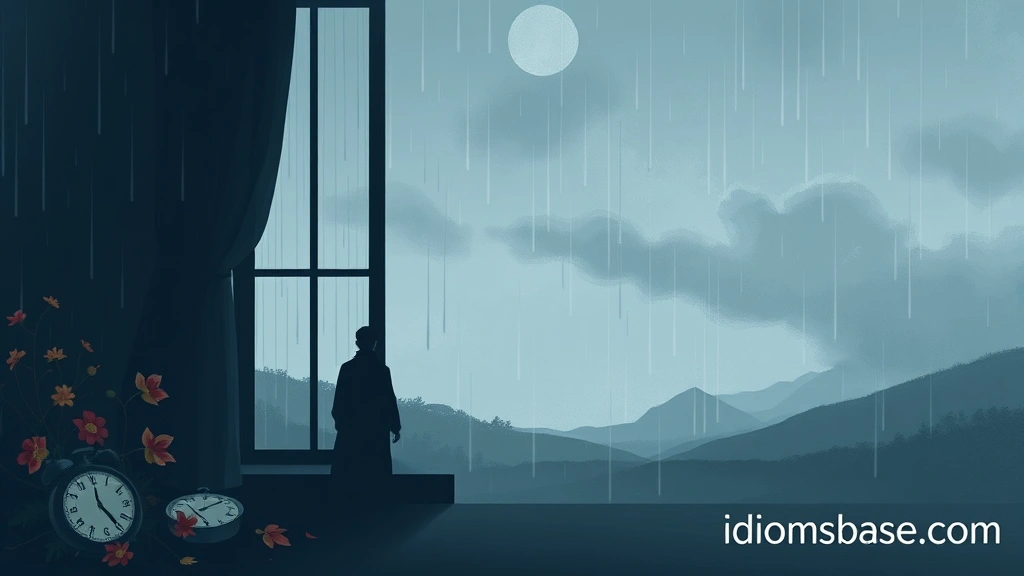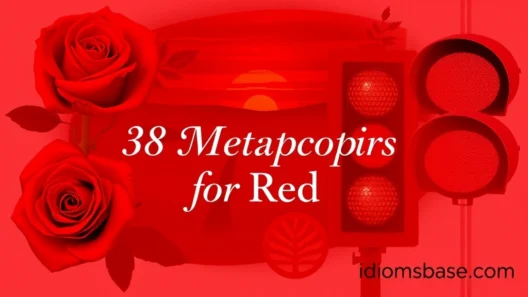Have you ever felt a sadness so profound it seems to color your entire world? It’s a universal human experience, yet so often, words fail us when we try to describe its depth. That’s where metaphors come in! They offer us a beautiful, vivid, and sometimes surprising way to capture the essence of difficult emotions.
Metaphors don't just describe; they help us understand, process, and even share what we're feeling when plain language falls short. They paint pictures in our minds, helping us connect with the emotion on a deeper level. Let's explore 38 powerful metaphors for sadness that might just resonate with your own experiences or help you better understand someone else's.
The Weight of Sadness
Sadness often feels like a heavy burden. These metaphors capture that crushing sensation.
- A heavy blanket: It smothers you, making it hard to move or breathe freely.
- A sinking ship: You feel like you're going down, slowly but surely.
- A lead cloak: It weighs you down, making every step an effort.
- A stone in the heart: A solid, unmoving ache deep inside.
- An anchor: It keeps you tethered, unable to drift away or find lightness.
- A mountain on your shoulders: The immense pressure feels unbearable.
Sadness as a Landscape or Environment
Sometimes sadness isn't just in you; it feels like the very atmosphere around you.
- A barren desert: Empty, desolate, and devoid of life or hope.
- A dark cloud: It follows you, casting a shadow over everything.
- A cold, empty room: Isolated, unwelcoming, and echoing with loneliness.
- A perpetual twilight: Never truly dark, never truly light, just a dim, lingering gloom.
- A dense fog: It obscures your vision, making it hard to see clearly or find your way.
- A deep well: You're trapped at the bottom, looking up at a distant light.
Sadness as a Force of Nature
Sadness can feel overwhelming, like an unstoppable natural phenomenon.
- A raging storm: Turbulent, destructive, and unpredictable.
- A tidal wave: It washes over you, pulling you under its powerful current.
- A constant drizzle: Not a downpour, but a persistent, soul-dampening wetness.
- A frozen river: Your emotions are stuck, unable to flow or move.
- A hollow wind: It whistles through you, leaving you feeling empty and exposed.
Sadness as a Physical State or Illness
The emotional pain of sadness can often manifest as physical feelings, like an ailment.
- A dull ache: A persistent, low-level pain that never fully disappears.
- A broken wing: You feel unable to soar, grounded and vulnerable.
- A festering wound: It hurts, and if left untreated, it only gets worse.
- A slow poison: It seeps into every part of you, draining your vitality.
- A heavy chain: It binds you, restricting your movement and freedom.

Sadness as an Object or Substance
These metaphors give sadness a tangible form, highlighting its presence.
- A shattered mirror: Your reflection is fragmented, distorted, and broken.
- A faded photograph: Memories are dim, colors are muted, and vibrancy is lost.
- A broken record: The same painful thoughts or feelings play over and over.
- A threadbare tapestry: What was once beautiful and vibrant is now worn and thin.
- A bitter pill: Hard to swallow, leaving a lingering, unpleasant taste.
- An empty cup: You feel drained, with nothing left to give.
Sadness as a Companion or Presence
Sometimes sadness feels like a constant shadow or an unwelcome guest.
- A silent scream: The pain is intense, but you can't voice it.
- A shadow: It follows you everywhere, always there, just out of reach.
- A persistent hum: A low, irritating noise that you can't tune out.
- A quiet thief: It steals your joy, your energy, and your peace, almost unnoticed at first.
- A cold hand: It grips your heart, making it feel constricted.
Sadness as a Journey or Process

Sadness isn't always static; it can be a path you're on, or a process you're undergoing.
- Walking through quicksand: Every step is difficult, and you feel like you're sinking.
- Lost at sea: Disoriented, adrift, and without a clear direction.
- A long tunnel: You can't see the end, but you hope there's light somewhere.
- A fading fire: Your inner warmth and passion are slowly dying out.
- A broken compass: You've lost your sense of direction and purpose.
Key Takeaways
- Metaphors are powerful tools: They help us express complex emotions like sadness when words alone aren't enough.
- They offer new perspectives: By comparing sadness to something else, we can gain a deeper understanding of its nature and impact.
- They foster connection: Sharing metaphors can help others relate to your experience, building empathy and understanding.
- Sadness is multifaceted: These 38 metaphors show just how many different ways sadness can be felt and described.
- Language matters: Finding the right words, even metaphorical ones, can be a vital step in processing and communicating our feelings.
Frequently Asked Questions (FAQs)
Q1: Why are metaphors important for describing emotions?
Metaphors are incredibly important because they allow us to describe abstract, internal experiences like emotions in concrete, relatable terms. They bridge the gap between what we feel and what we can articulate, making complex emotions more understandable for ourselves and others.

Q2: How can using metaphors help someone who is sad?
For someone experiencing sadness, using metaphors can be incredibly validating. It helps them feel understood and less alone. It also provides a language to express what might otherwise feel inexpressible, which can be the first step towards processing and healing.
Q3: Can metaphors for sadness be used in therapy?
Absolutely! Many therapists encourage clients to use metaphors, drawings, or other creative expressions to describe their feelings. It can reveal deeper insights into their emotional landscape and provide a common language for the therapist and client to work with.
Q4: Are there cultural differences in metaphors for sadness?
Yes, definitely! While the core emotion of sadness is universal, the metaphors used to describe it can vary greatly across cultures. These metaphors often reflect cultural values, beliefs, and common experiences. Exploring these differences can be fascinating and enriching.
Q5: How can I come up with my own metaphors for sadness?
To come up with your own metaphors, try to think about what sadness feels like to you. Is it a color? A sound? A texture? A weight? An object? A weather phenomenon? Let your imagination roam freely and don't censor your initial ideas. The most personal metaphors are often the most powerful.
Q6: Do these metaphors apply to grief as well?
Many of these metaphors can certainly apply to grief, as grief is a profound form of sadness. However, grief often has unique dimensions (like loss, longing, and memory) that might inspire additional, specific metaphors. Think of sadness as a broad category, and grief as a very intense, specific type of sadness.
Q7: Can metaphors for sadness sometimes feel overwhelming?
For some people, dwelling on intense metaphors for sadness might feel overwhelming, especially if they are already struggling. It’s important to remember that these are tools for expression, not obligations. If a metaphor feels too heavy, it's perfectly fine to explore other ways of understanding or describing your feelings.
Q8: How do metaphors differ from similes?
This is a great question! Both metaphors and similes compare two unlike things. The key difference is that similes use "like" or "as" (e.g., "sadness is like a heavy blanket"), while metaphors state that one thing is another (e.g., "sadness is a heavy blanket"). Metaphors are generally considered more direct and powerful because they create a stronger identification between the two things being compared.
Isn't it incredible how language, especially through the magic of metaphors, can help us navigate the complex world of emotions? We hope this list has given you new ways to think about, express, and understand sadness. What metaphors resonate most with you? Share your thoughts and let's continue this conversation!






